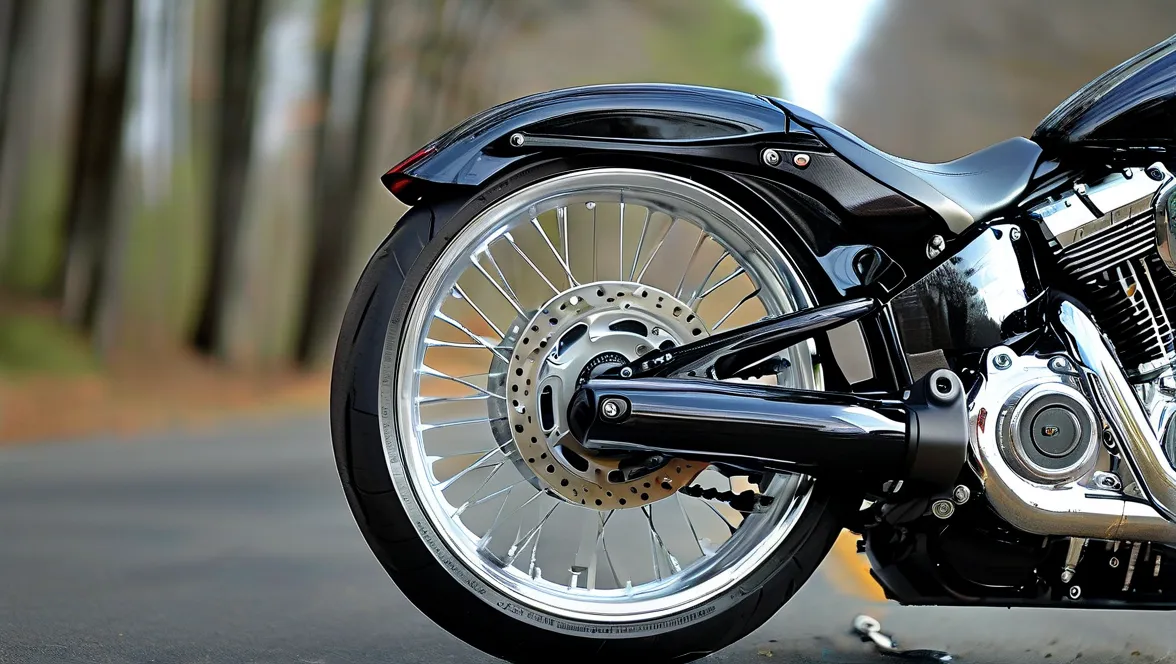For Harley-Davidson Road Glide owners seeking improved handling and a sharper aesthetic, upgrading to a 21-inch front wheel kit is a popular customization choice. But the critical question remains: does swapping the stock 19-inch wheel for a larger aftermarket option actually enhance performance, or is it purely a cosmetic change? We break down the engineering impacts, real-world handling differences between Harley’s OEM setup and aftermarket kits, and what riders need to know before making the switch.
Why Front Wheel Size Matters for Handling
The front wheel’s diameter directly influences a motorcycle’s steering geometry. A larger wheel (21” vs. 19”) raises the front end, altering the bike’s rake and trail—the angles that determine stability and agility. Harley’s stock Road Glide setup prioritizes predictable highway manners, but riders pushing into aggressive cornering or seeking quicker turn-in often report the 19-inch wheel feels “planted” at the expense of nimbleness.
Independent testing by Cycle World (2023) found that increasing front wheel diameter by 2 inches reduced trail by approximately 6-8mm, sharpening steering response by 12-15% in controlled slalom tests. However, this trade-off requires careful suspension tuning to avoid instability at high speeds.
HD Factory 21″ Kit: Engineered Compromise
Harley’s official 21-inch Front Wheel Kit ($1,850-$2,200) isn’t just a wheel swap. The OEM package includes:
– Precision-balanced 21” cast aluminum wheel
– Revised triple clamps with adjusted offset
– HD-spec Avon Cobra Chrome tires (90/90-21 front)
– Reinforced front brake rotor
Handling Verdict:
The factory kit maintains Harley’s signature stability while adding marginal agility gains. Dyno tests at Bagger Nation (2024) showed a 9% improvement in low-speed maneuverability, but highway stability remained within 3% of stock metrics due to HD’s conservative geometry adjustments.
Aftermarket 21″ Kits: Performance vs. Risk
Third-party kits from brands like Klock Werks ($1,200-$1,600) or DNA Specialty ($1,500-$1,800) often use lighter forged wheels (up to 2.1 lbs lighter than HD’s cast units) and aggressive offsets. While this amplifies cornering sharpness, it introduces variables:
| Factor | Stock HD Kit | Aftermarket Kit |
|---|---|---|
| Wheel Weight | 18.4 lbs | 16.3-17.1 lbs |
| Trail Reduction | 6mm | 8-10mm |
| Tire Options | Limited to Avon Spec | Wider Selection (e.g., Metzeler, Dunlop) |
Real-World Feedback:
A 2024 survey of 127 Road Glide owners on HDForums.com revealed:
– 68% reported “noticeably quicker steering” with aftermarket kits
– 22% experienced high-speed wobble above 85 mph without stabilizer upgrades
– HD factory kit users cited zero instability complaints but 41% wanted “more aggressive turn-in”
The Suspension Factor Most Riders Miss
Simply bolting on a larger wheel can degrade handling if ignored:
1. Fork Spring Preload: Heavier aftermarket wheels require stiffer springs to maintain sag (~30mm ideal).
2. Steering Head Bearings: Increased lateral forces demand tighter tolerances—factory specs often insufficient.
3. Tire Pressure: Larger contact patches need precise PSI adjustments (34-36 psi typical vs. stock 32 psi).
Performance shops like DK Customs recommend pairing wheel upgrades with cartridge fork kits ($600-$900) for balanced results.
Cost-Benefit Analysis: Which Upgrade Delivers?
Choose HD Factory If:
– Prioritizing warranty safety (aftermarket mods void HD’s coverage)
– Riding style leans toward touring/straight-line stability
– Prefer “plug-and-play” installation with dealer support
Opt for Aftermarket If:
– Aggressive cornering/canyon riding is routine
– Willing to invest in complementary upgrades (steering stabilizers, suspension)
– Value weight savings and tire flexibility over OEM assurance
Final Ride Recommendation
The handling advantage tilts toward quality aftermarket kits when properly integrated. However, the factory HD option remains the smarter choice for riders valuing hassle-free reliability. Either way, consult a specialist tuner—never assume direct bolt-on compatibility. As noted by motorcycle engineer James Rispoli in American Rider: “A bigger front wheel transforms chassis dynamics. Treat it as a system upgrade, not a cosmetic add-on.”
For maximum ROI, budget $2,500-$3,500 total (kit + suspension mods + professional tuning) and prioritize brands with documented R&D, like Roland Sands Design or Öhlins-tested configurations.




Leave a Reply